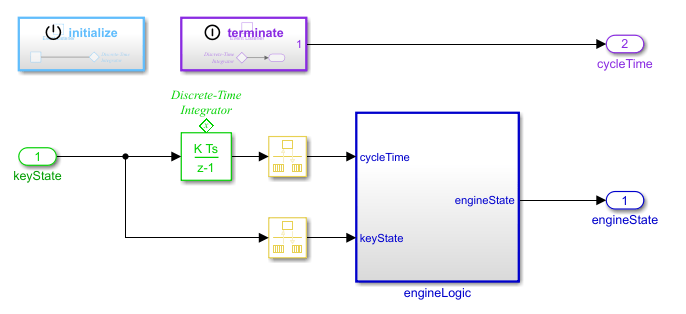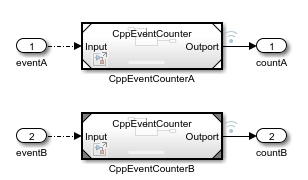C++ 数据接口和函数接口
控制从 Simulink 模型生成的 C++ 类
要生成可轻松插入您现有软件架构中的高效 C++ 代码,请配置 C++ 类接口。从模型生成 C++ 类接口时,模型显示为类,数据元素显示为类成员,模型函数显示为类方法。通过以交互方式或编程方式配置 C++ 类接口,您可以配置:
类信息 - 类名称和命名空间
类成员信息 - 类成员数据可见性和访问方法
类方法信息 - 类方法名称和参量
您可以使用这些自定义快速调整基于速率和导出函数模型生成的接口,以满足您的应用程序集成要求。
工具
| 代码映射 - C++ 编辑器 | Configure how model elements and functions appear in generated C++ code (自 R2021a 起) |
对象
coder.mapping.api.CodeMappingCPP | C++ 代码生成的模型数据和接口配置 (自 R2021a 起) |
函数
主题
- 模型接口元素的 C 数据代码接口配置
通过使用数据代码接口配置,控制生成的 C 代码中模型数据元素和函数的表示。
- Interactively Configure C++ Interface
Interactively configure the C++ class generated from a Simulink® model.
- Programmatically Configure C++ Interface
Programmatically configure the C++ class generated from a Simulink model.
- Configure Parameters for C++ Interface Code Generation
Configure and generate code for instance-specific or shared parameters.
- Manage Multiple Code Mappings for a Model
Design models that are platform-neutral and ready to deploy to different run-time environments.
- Generate Individual C++ Namespaces for Architectural Data Types
Example of generating C++ namespaces for architectural data types.


